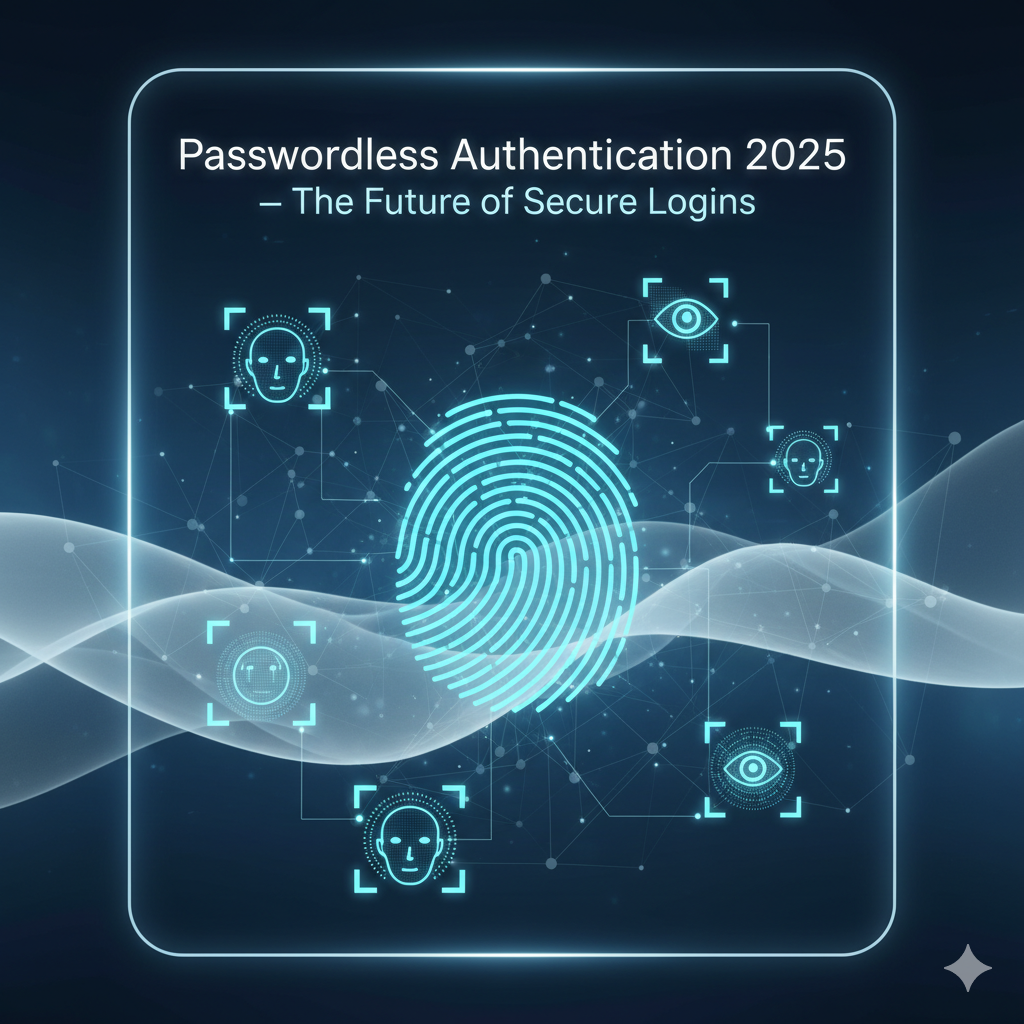Introduction: Passwordless Authentication 2025 and the End of Password Fatigue
Passwordless Authentication 2025 marks a major shift in how we secure our online identities. For decades, passwords have been the weakest link in cybersecurity — hard to remember, easy to steal, and often reused across platforms. In 2025, the digital world is embracing smarter, safer alternatives powered by biometrics, cryptographic keys, and artificial intelligence (AI).
This evolution doesn’t just make logging in faster; it’s building a stronger wall against phishing, credential stuffing, and identity theft — threats that have plagued users and businesses alike.
What Is Passwordless Authentication 2025?
Passwordless Authentication 2025 refers to the growing adoption of technologies that allow users to log in without typing traditional passwords. Instead, authentication happens through secure methods like:
- Biometric data (fingerprints, facial recognition, voice patterns)
- FIDO2 and WebAuthn protocols (hardware keys, trusted devices)
- Magic links and one-time passcodes sent to verified devices
- AI-driven identity verification using behavior analysis
These methods eliminate the need to memorize or store passwords, significantly reducing the attack surface for hackers.
Why Passwordless Authentication Is the Future of Online Security
The move toward Passwordless Authentication in 2025 is not just a convenience upgrade — it’s a security necessity. Passwords have long been the easiest way for cybercriminals to gain unauthorized access. According to cybersecurity analysts, over 80% of data breaches involve compromised credentials.
With passwordless systems, even if a hacker gains access to a database, there’s no password to steal or reuse. Instead, login credentials are linked to unique user devices or biometrics, verified locally and never stored in plain text.
Key Technologies Driving Passwordless Authentication 2025
- Biometric Authentication
Fingerprints, facial scans, and voice recognition are becoming standard. Apple’s Face ID and Windows Hello are already setting the stage for secure, frictionless login experiences. - FIDO2 and WebAuthn
These open standards, backed by major companies like Microsoft and Google, enable cryptographic authentication between users and online services — removing the need for passwords altogether. - AI and Behavioral Biometrics
AI systems now learn users’ typing speed, mouse movement, and even walking patterns to detect anomalies and prevent fraud in real time. - Hardware Security Keys
Devices like YubiKey or Google Titan act as physical tokens that confirm identity without requiring any password input.
Benefits of Passwordless Authentication 2025
- Enhanced Security
Since credentials are not stored on central servers, hackers can’t steal what doesn’t exist. - Frictionless User Experience
Logging in via fingerprint or face scan takes seconds, reducing login frustration and support tickets related to “forgotten passwords.” - Reduced Costs for Businesses
IT departments spend millions annually resetting passwords. With passwordless systems, this burden nearly disappears. - Future-Ready Compliance
Regulations like GDPR and Zero Trust frameworks are favoring stronger, passwordless models that protect user privacy.
Real-World Examples of Passwordless Authentication in 2025
- Microsoft has enabled full passwordless logins across Windows and Azure accounts.
- Google now supports passkeys on Android and Chrome, letting users authenticate using biometrics.
- Banks and fintech apps use behavioral AI to verify user identities silently in the background.
These implementations show that Passwordless Authentication 2025 is not just a prediction — it’s happening now.
Challenges and Considerations
Despite its advantages, passwordless systems face challenges like:
- Device dependency: Losing your phone or security key can lock you out.
- Privacy concerns: Storing biometric data raises ethical and legal questions.
- Adoption gap: Smaller companies may lack the resources to upgrade quickly.
Still, as technology matures and standards evolve, these barriers are shrinking rapidly.
The Road Ahead — A Password-Free World
By 2025, Passwordless Authentication is expected to become the new global standard for digital security. Experts predict that within the next few years, over 60% of enterprises will adopt passwordless logins as part of their Zero Trust strategy.
The combination of biometrics, AI, and encryption is leading us toward a world where authentication is both seamless and secure — without the need to remember a single password.
Conclusion: Passwordless Authentication 2025 Is Redefining Digital Trust
Passwordless Authentication 2025 represents the perfect balance of convenience and security. As traditional passwords fade into history, biometric and AI-driven systems are building the foundation for safer digital interactions.
The future of cybersecurity is not about remembering — it’s about recognizing. And Passwordless Authentication is the key to unlocking that future.
Microsoft Security Blog
IBM Cybersecurity Reports
Related Topic Cybersecurity 2025: Biggest Threats and How to Stay Safe
